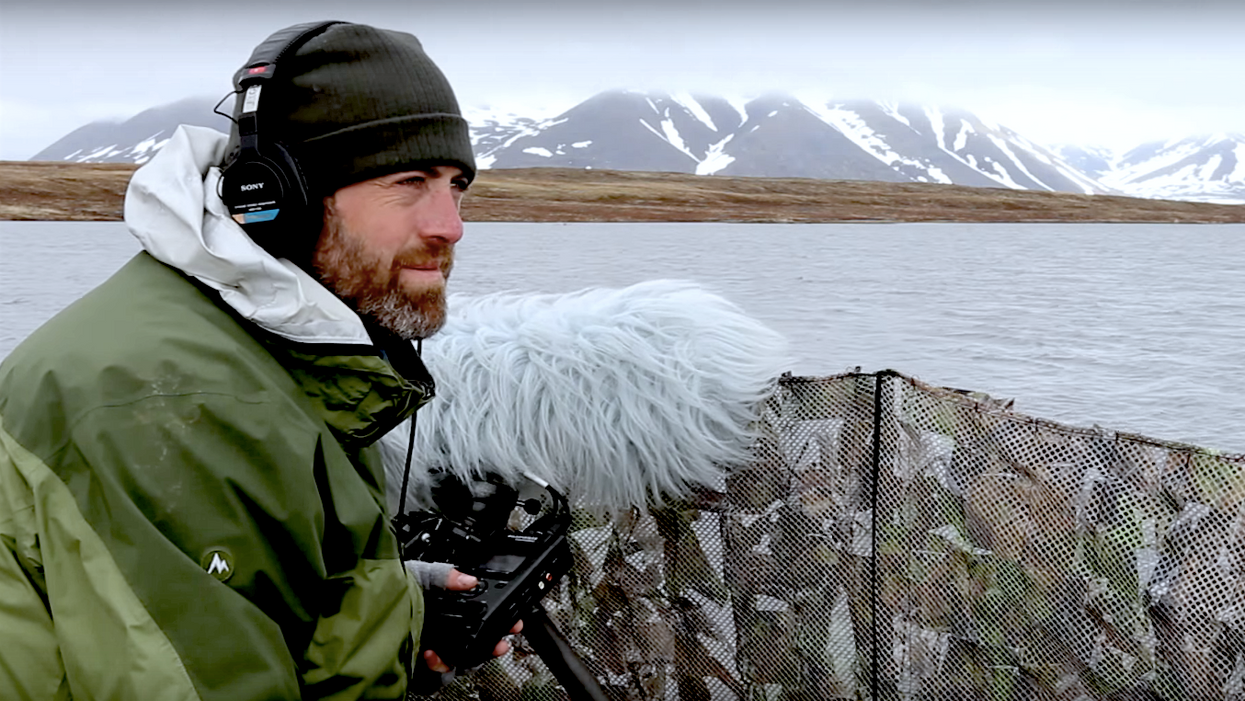The World's Largest Library of Animal Sounds Is Now Online & Ready for Licensing
If you need specific and accurate animal sounds for your film, Cornell University's Macaulay Library has you covered.

The library, which has been collecting recordings of animal sounds since 1929, now consists of over 150,000 unique recordings in which over 9,000 species are represented. In the past few years, the entire library has been digitized by the Macaulay staff and made searchable so that people looking for specific sounds can easily find and license them. All in all, the catalogue contains more than 7513 hours of material.
Why would this come in handy, you ask? Well, in part because of the extreme specificity of the library's catalogue. If you have a script that relies on a character hearing the sound of a yellow-billed loon — maybe said character is an arctic researcher or Alaskan fisherman — you can now incorporate that oddly specific sound into your film. Or maybe you're looking for one of the creepiest animal noises you can find. In that case, the call of the common loon will make your spine tingle.
Although it has been reported on several other sites that access to this library is free, in reality, it depends on what kind of license you intend to pursue. For instance, I placed an order with Macaulay for the aforementioned call of the yellow-billed loon, specifying in the order that I was pursuing a commercial license for an independent film. One day later, I received an email saying that the cost to license that sound would be $25. Not bad, but certainly not free. There are other licensing options, however, and depending on what you choose, you may or may not end up paying a licensing fee.
It's also worth noting that Macaulay also deals stock footage of many of the animals, some of which can be seen in the videos above. And though the library consists largely of bird media (it does come from the school of ornithology, after all), there are also recordings of elephants, whales, frogs, primates, and many more. Here are a few staff favorites:
- Earliest recording: Cornell Lab founder Arthur Allen was a pioneer in sound recording. On a spring day in 1929 he recorded this Song Sparrow sounding much as they do today
- Youngest bird: This clip from 1966 records the sounds of an Ostrich chick while it is still inside the egg – and the researchers as they watch
- Liveliest wake-up call:A dawn chorus in tropical Queensland, Australia is bursting at the seams with warbles, squeals, whistles, booms and hoots
- Best candidate to appear on a John Coltrane record:The Indri, a lemur with a voice that is part moan, part jazz clarinet
- Most spines tingled: The incomparable voice of a Common Loon on an Adirondacks lake in 1992
- Most erratic construction project:the staccato hammering sounds of a walrus under water
- Most likely to be mistaken for aliens arriving: Birds-of-paradise make some amazing sounds – here’s the UFO-sound of a Curl-crested Manucode in New Guinea
If you're interested in certain animal sounds for your next film, head on over to the Macaulay Library site and browse through their massive catalogue. You'll most likely find the exact sound you're looking for, and you might also find some creative inspiration through listening to the other bizarre, exotic noises that they've captured throughout the years.
Source: Macaulay Library











